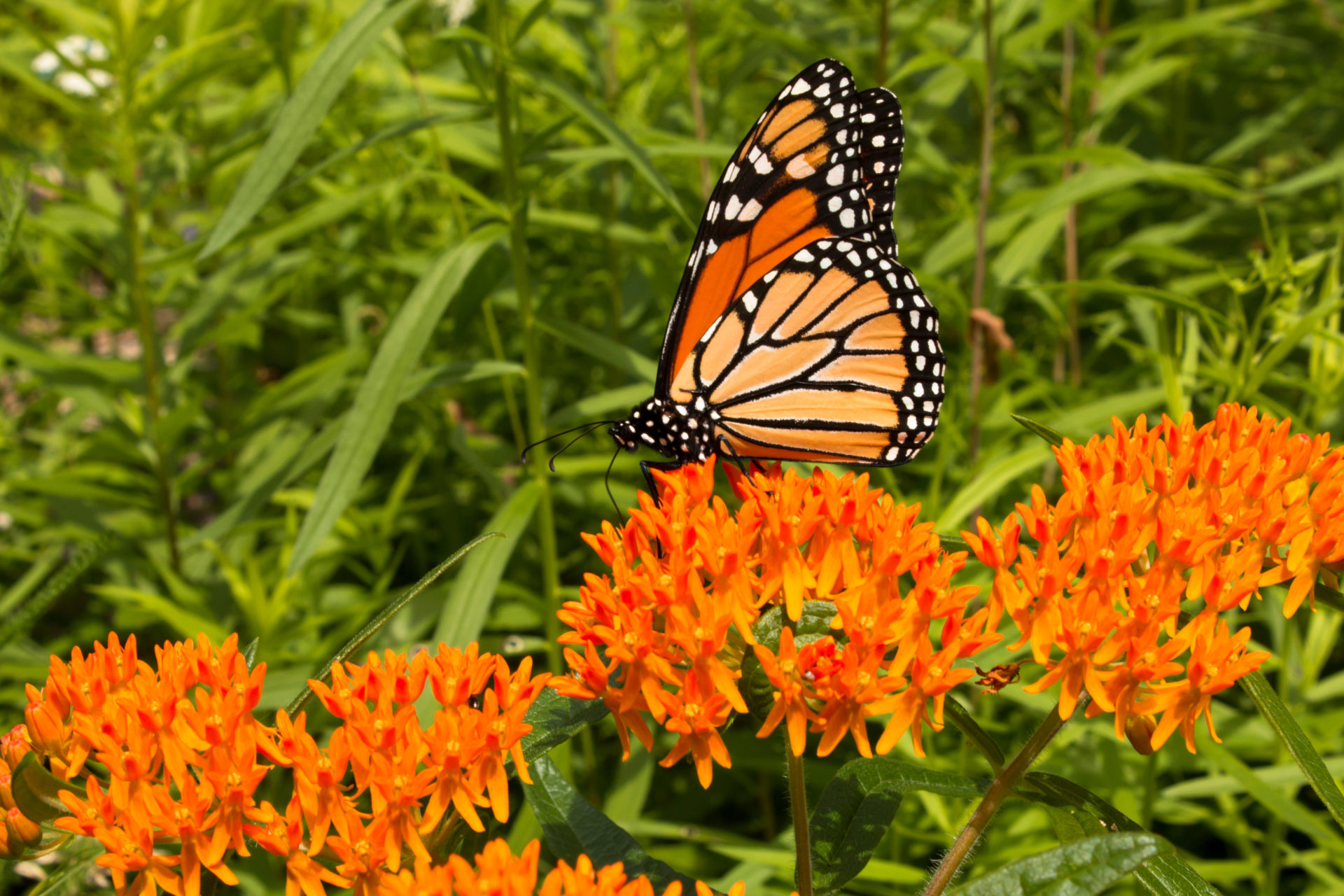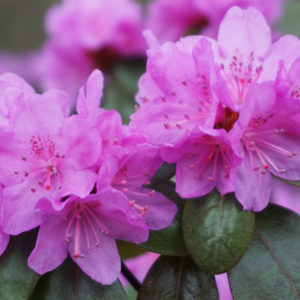by Catherine Cooper
Native plants are gaining in popularity. Not only are they adapted to their surroundings, but they form a necessary part of the ecological chain. Weston Nurseries has recognized the benefit of native plants for a number of years and has recently been in the position to start raising these beneficial plants for sale. Under the name of Weston Rewilding, we are excited to bring a selection of familiar and less common native plants to the market, some of which are described below.
Asclepias Tuberosa – Butterfly Milkweed
Of the 73 milkweeds native to the United States, it is butterfly milkweed that most gardeners are familiar with, and understandably so. With its bright orange, nectar-rich flowers it attracts many pollinators, as well as being a larval host for monarch and queen butterflies. Its native range extends throughout eastern North America from Ontario in Canada, south to Florida. It grows around 24” tall, and is drought tolerant, being a plant of plains and open spaces. Plant it in a sunny spot with good drainage and it will reward you with clusters of orange flowers. And if you want a little variation in flower color, look for the cultivars ‘Gay Butterflies’ (red/orange/yellow mix) and ‘Hello Yellow’.
Rudbeckia Fulgida – Black Eye Susan/Showy Coneflower
This bright yellow daisy is a staple of summer gardens. Growing 20-30” tall it provides a welcome splash of color from late July onwards. In the wild, it can be found in the Midwest states and as far east as Connecticut, but it is equally at home in New England. Another plant for full sun, it requires average moisture. Not only does it offer a nectar source for pollinators, particularly bumblebees, but the seed heads are a source of food for birds in fall and winter. ‘Goldsturm’ is the cultivar most similar to the species, but compact varieties like ‘Little Goldstar’ provide a floriferous option for smaller spaces.
Eurybia Macrophylla – Big Leaf Aster
With flower stalks growing up to 4’ tall, and possessing large basal leaves up to 8” across, this native aster is striking even just in leaf. While its delicate light lavender flowers don’t pack such a visual punch as its foliage, this is an unusual plant for woodland settings where it makes a useful ground cover. Its native range covers the eastern half of the U.S. as far south as Georgia. Not only are its flowers attractive to pollinators, but it is the larval host for the pearl crescent butterfly.
Carex Pensylvanica – Pennsylvania Sedge/Oak Sedge
Pennsylvania sedge, as its name suggests is a north-eastern native, although its range extends from Canada down to Florida. It is one of the earliest sedges to bloom, doing so in late spring. Tolerant of sun or shade, it is a clumping grass growing about 9” tall and is equally happy in open spaces or at the edges of oak and pine woods. For those wishing for a native alternative to turf grass, the Pennsylvania sedge makes an attractive ground cover that only needs mowing in the fall.
Carex Appalachia – Appalachian Sedge
With a native range that includes New York State, Pennsylvania and Massachusetts, it can also be found growing wild in several neighboring states. Similar to Pennsylvania sedge in appearance, although growing a little taller, this grass is at home in shadier conditions, tolerating full shade. It too can be used as a turf grass alternative, and is actually quite drought tolerant, making for a low maintenance ground cover.
Monarda Didyma – Scarlet Beebalm/Oswego Tea
This 3’ tall perennial has showy red flowers, which are extremely attractive to bees, butterflies and hummingbirds. Native to moist areas such as meadows or riverbanks from the mid-west to mid-Atlantic, it has expanded into areas such as New England. One of its common names is due to the fact that oils from this plant were used as a salve for bee stings, and its other common name because herbal tea was made from its leaves. Preferring moist soil, it is already a staple of flower gardens with a variety of cultivars which expand the color palate and versatility of this plant. ‘Jacob Cline’ is a mildew resistant variety most similar to the species, while more compact cultivars such as Rockin’ Raspberry® from the SUGAR BUZZ® series offer similar mildew resistance as well as increased color choices.
Athyrium Filix-femina – Lady Fern
Lady fern is a native throughout the entire United States, and its preferred habitat is moist, shady places, although it does tolerate some sun and occasional dry conditions. This easy-care, deciduous fern is slow spreading, and will enhance woodland settings with its light green fronds up to 3’ tall. Its stems range in color from green, through purple and red and this attribute has given rise to the popular cultivar ‘Lady in Red’, which has pronounced red stems which contrast nicely with the lime-green foliage.
Opuntia Humifusa – Eastern Prickly Pear
This cactus is truly hardy in New England. It can be found growing throughout most of the eastern half of the U.S. in a variety of habitats that offer plenty of sun and free-draining soil. It is tolerant of nutrient-poor conditions and winter cold. It achieves winter protection by rapidly removing moisture from its fleshy leaves, so its shriveled winter look is a freeze protection strategy. Growing no more than 12” tall, it has peachy-lemon flowers about 1.5” across, which in turn will result in red fruit enjoyed by birds and small mammals.
This is just a selection of native plants that are currently available at Weston Nurseries. Selections will vary according to location and season, but Weston Nurseries is excited to bring deserving native plants to the gardening public.
Sources:
https://www.wildflower.org/plants/








